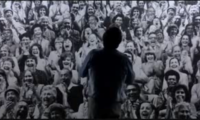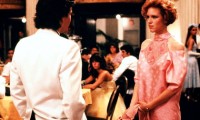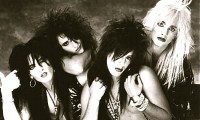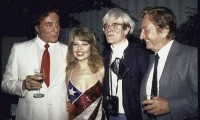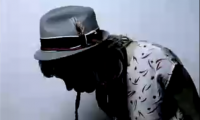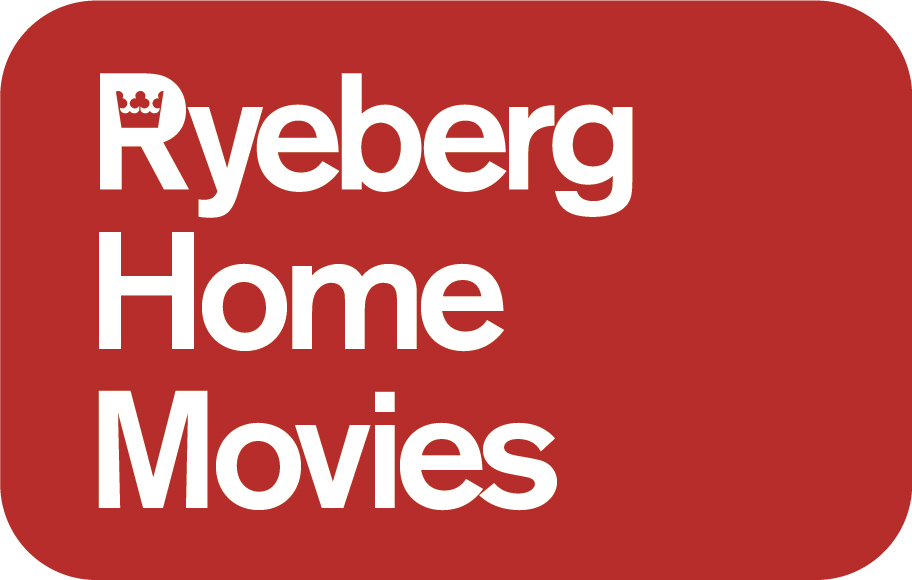TheTopFive, “Ultimate John Hughes Tribute: Top 5 Scenes” (1984-86)
Things were so simple then. The 2009 passing of John Hughes, though ill-timed for the accelerated zeitgeist in the prolonged shadow of Jack-O’s farewell, permitted many ’80s babies to again bask in the lucid energy of Ferris Bueller’s shower mic finesse and urgent pivot-step.
Still, it’s difficult for the youth of today to objectively evaluate whether Hughes’ films—their tingly adolescent strife aside—served as decade-mythologizing of the Hollywood-ist order. Did the ’80s really pop fantastic like innocent lip gloss on Anticipated Friday Night? Like soft-neon signs in a socially-impassioned mall food court?
Matthew Broderick‘s IRL snob-trajectory after “Bueller” and “Project X” should be evidence enough of VH-1-endorsed decade hyperbole. And yet the more surprising answer is contained in the below video: a ten-minute, self-indulgent PSA starring the Me Decade’s posterboy, Corey Haim, made and released in 1988.
Historians and nostalgists can finally take a breather: Haim’s vid is double-proof that the ’80s were “The ’80s.” This thing plays like a heavy, child star docu-spoof directed by Paul Thomas Anderson in the vein of his early test footage for “Boogie Nights“…except it’s non-fiction.
Corey Haim, “Me, Myself, and I” (PSA, 1988)
That PSA is synth-addled proof that during the ’80s Haim inhaled cool like tanks of nitrous, and no doubt, in addition to nitrous. Modern science cannot explain it, but Haim was officially appointed Prince of the ’80s by Lenient Mother Nature herself. As the decade came to a head, clashing messily with ’90s jadedness and the earliest signs of ’00s irony sickness, Haim was too much the embodiment to find a dry place.
In 1985 and ’86, Haim precociously hickied the hearts of girls and their babysitters with “Lucas” after registering with cool guys and dorks in the lycanthropic Stephen King flick “Silver Bullet.” It was a watershed role in 1987, as a comic book devouring Californian/de-facto vampire slayer, Sam Emerson, in “The Lost Boys” that vaulted Haim to tan, fresh-faced superstardom.
After that, Haim’s teenage fans could never imagine how his life would suddenly become plush in monies, alligator floats, keyboard lessons, Ferraris, bitches, and, of course, cocaine. Perhaps no quote better encapsulates the zany levels of romance demanded of an ’80s heart throb than this one from the PSA, Haim’s second mention of dolphins therein, natch…
“What does kissing really mean to me? To me, if you feel…you kiss a girl, that certain feeling of all of those dolphins, like, swimming through your blood stream and you get those get good tingles inside your stomach? I don’t think there’s anything better than kissing, because…it basically comes to, I guess, the word ‘love.’ I guess...that’s what it’s all about.”
Love is the answer. “And kids,” to paraphrase Haim later, “don’t forget to stay in the school. Did I mention how I only go to school for three hours a day? Isn’t that totally awesome?”
On screen in “The Lost Boys” and “License to Drive,” Haim developed a signature for leaving his mouth in an agape state of awe for what seemed like minutes, hours—like vert ramp hangtime measured in fun. The sight of Haim’s agape mouth became so synonymous with his acting that, per an interview I did with him this year, Haim’s mother used to warn him about “catching flies.”
Soon enough, hangers-on and Hollywood goons began to take advantage of Haim’s open mouth by giving him pills, swarms of them. He’s so pilled out in the PSA that his cool-DNA feels exposed without his knowing; it’s unnatural and tragic but fascinating—like when a beloved android’s wires are sputtering and its eyes are rolling back as it delivers a heartfelt message. If you watch closely, an equation of influences and inspirations show through: the positivity of John Ritter is a major ingredient. And dreaming big, an ethos Haim never really lost…
“I’m trying to get in the habit of, you know, picking up a book and writing my feelings down, well, not my feelings, but my thoughts about things. And hopefully I’ll be moving towards the writing and the directing, uh, soon” (Corey Haim in the above ’80s PSA).
“I want to direct. Definitely a goal of mine. I want to direct sci-fi, definitely not horror. Horror movies, man, the blood entails so much time. And horror movies are not fun, definitely not starting there as a director. Definitely not horror. I’d like to do something like “License to Drive.” Maybe some cool animation? I’m just kicking ideas around. I really like dramas, and horror movies are second…well, if I can get past the blood, I’m good to go. Then third, comedy is where it’s at for me, so that’s always number one, but maybe I’ll mix it up and make it a dramedy? And I’ll start directing from there” (Corey Haim, in an interview with me, April, 2009).
Haim’s personal demons weren’t available for comment about what it was like working for him in the ’90s and then having Haim work for them in the ’00s. In the aughts, Haim didn’t pull a fatal DJ AM, nor did his career hit another stride.
Throughout 2009, Haim remained just outside the public eye. A larger-than-expected role in the year’s amazing and absurd, “Crank 2: High Voltage,” at least vaulted the actor out of the ironic cameo dungeon in desperate films like “Lost Boys 2: The Tribe” and back into movie theaters. What’s more, Haim managed to demonstrate some old pep and charm, albeit playing a crack head with a giant mullet who’s bangin’ and abusin’ Amy Smart.
If Haim’s biggest hope was to become so famous and rich—and in the PSA, he’s on his way—that by 2009 he could stare back at L.A. from a vista in Tahiti, he failed. The below video shows how his life had come to consist of shopping marathons, signing autographs—re: possibly staged ones—and pecking the cheeks of immaculate, now hesitant California bimbos.
hookedonhollywood, “Corey Haim: Gifting event in West Hollywood” (2009)
Near the end of the vid, he puffs a cigarette, hair shaved on the sides like a juvenile delinquent. He playfully and habitually sells the paparazzi on the premise of an imagined “License to Drive” spin-off entitled “License to Fly.” He knows it’s bullshit, but hey, maybe not.
“License to Fly,” Haim tells the camera, would allow him the opportunity to finally make sex to co-star Heather Graham and then steal a plane “like Johnny Depp in “Blow“” and fly off to Cuba (might as well be Tahiti). (I wonder if Fidel Castro was a fan of Haim.)
I can’t write this article without mentioning Haim’s more stable partner in crime, Corey Scott Feldman, who was the chatterbox astronaut to his shooting star. Fortunately for fans and their families, neither ended up on a spilt milk carton; Haim sobered up and found peace enough in floating, sans alligator float, a couple of miles outside of the current TMZ-tribal-tattoo-sex-sweat celeb culture.
In the end, his career was a makeshift raft tied up with past glories, but what does it say about modern Hollywood and entertainment that he was still cooler and more believable than would-be Haims like Zac Efron, Lil’ Bow Wow, and Rumer Willis?
– Hunter Stephenson
